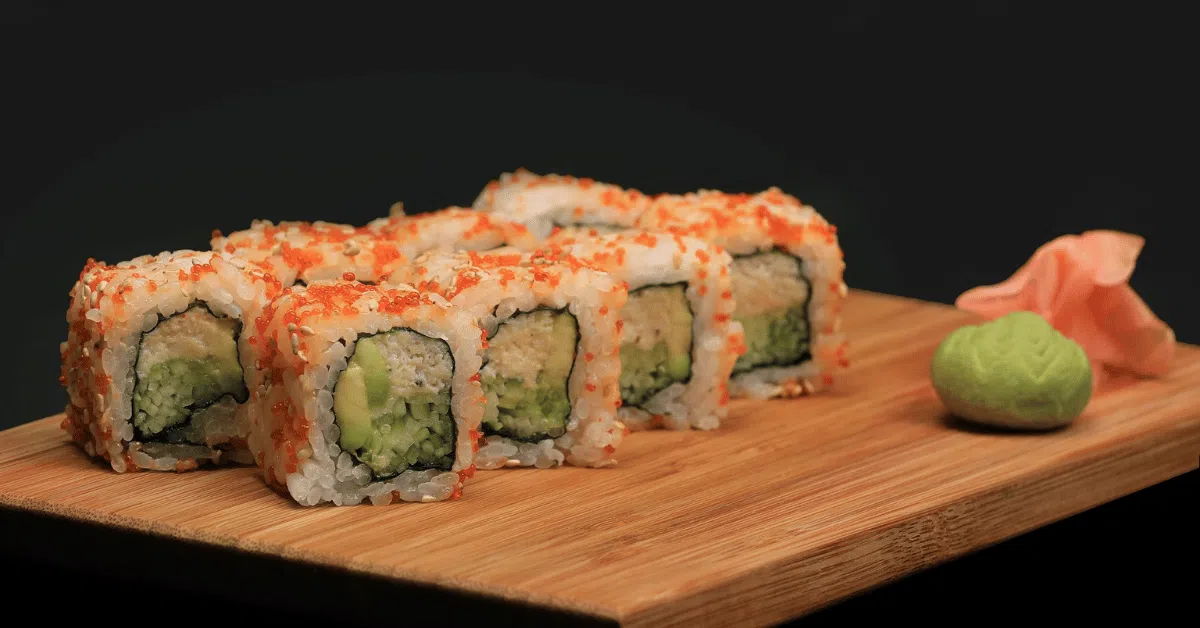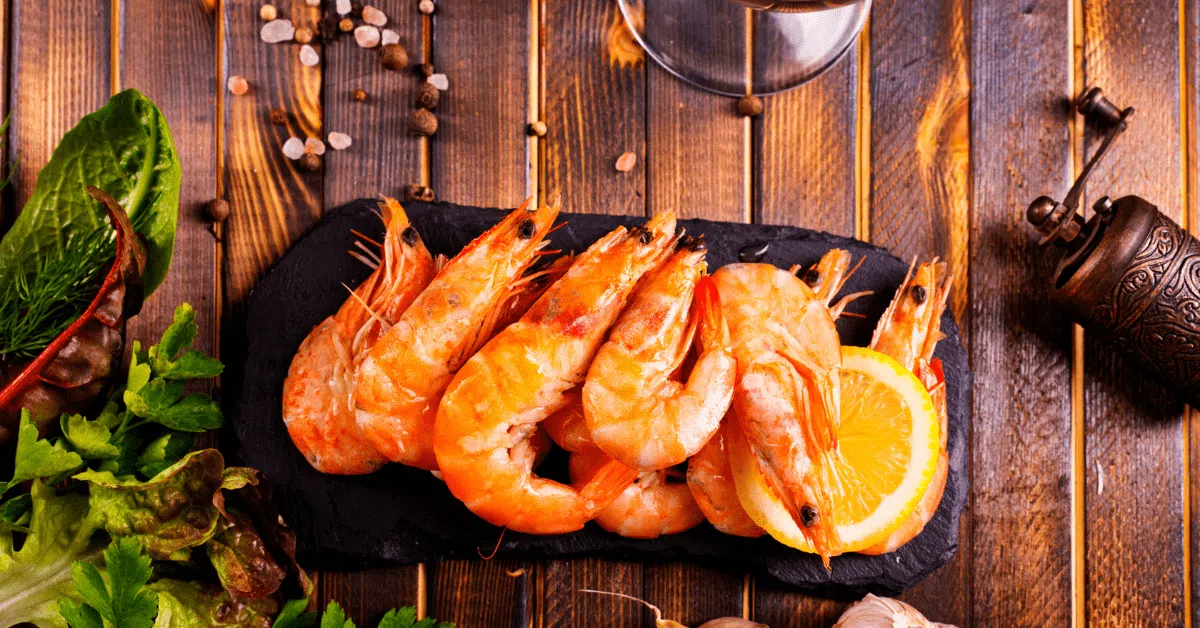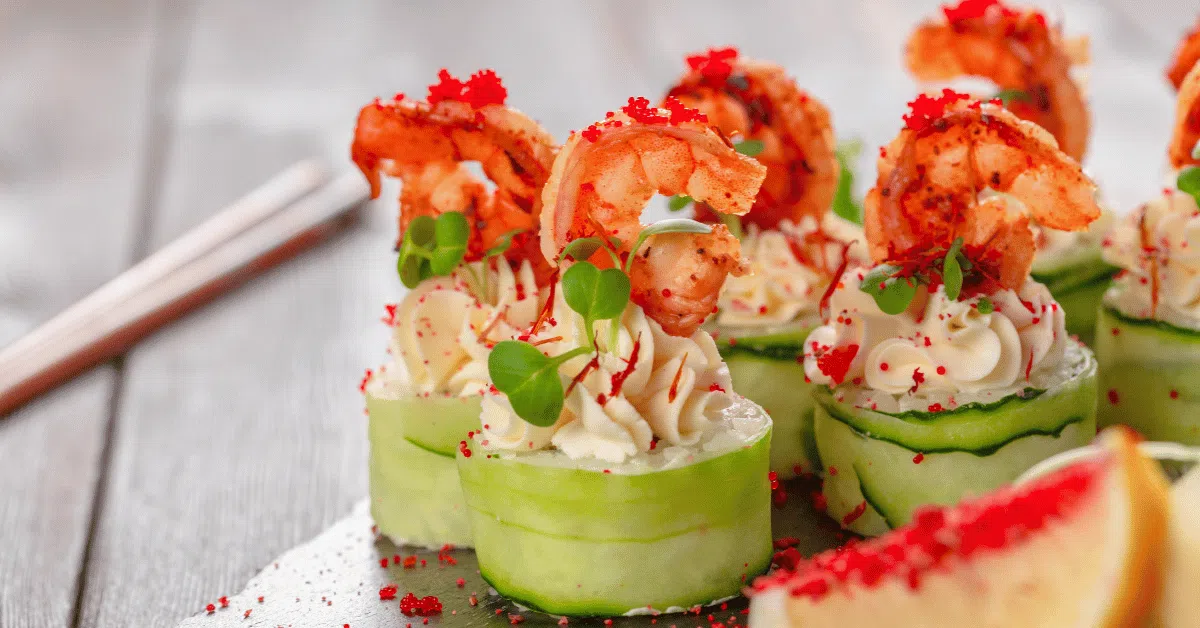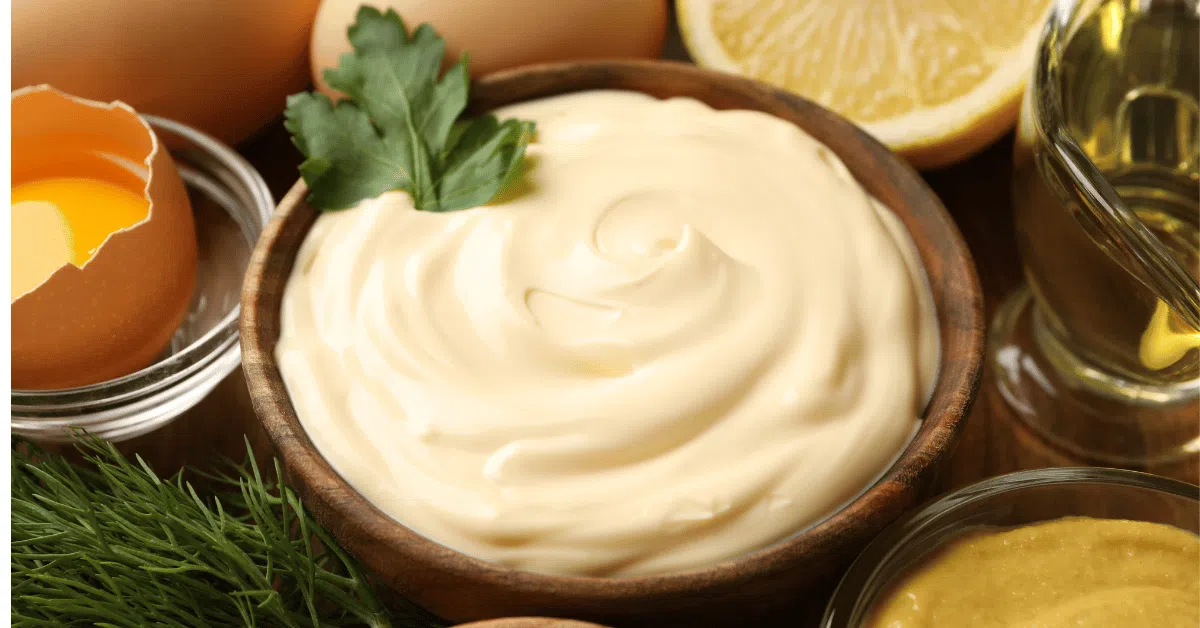Fish eggs sushi is a Japanese delicacy. This dish is made by adding various fish roe to the sushi, which adds texture and visual appeal. Japanese cuisine uses different types of roe in sushi, each with distinct characteristics. Today, I will give you all the information about five different types of fish roe found in sushi; tobiko, masago, ikura, kazunoko, and tarako.
From the crunchy burst of tobiko to the rich, gooey texture of ikura, these varieties will enhance your taste experience and contribute to the artistry of sushi presentation. If you are a sushi lover, understanding this fish roe will deepen your appreciation of this culinary tradition.
Sort Brief of Article
Toggle5 Types of Fish Eggs for Sushi
Tobiko (Flying Fish Roe): These small, bright orange fish eggs are world famous for their crunchy texture and mildly sweet taste. Tobiko is used as a garnish on sushi rolls and as a filling in gunkan-style sushi. It adds visual appeal and a satisfying crunch to the dish. These eggs are usually 0.5 to 0.8 millimeters in size.
Masago (Capelin Roe): Masago refers to capelin roe. It is smaller than tobiko and a paler color, often dyed for visual enhancement.
Masago provides a subtle flavor that complements the other ingredients. These eggs are used in sushi rolls and as a topping. The taste of masago is mild, with a slightly bitter undertone.
Ikura (salmon roe): Ikura consists of large, translucent orange salmon roe prized for its burst of flavor. These eggs are relatively larger than both Tobiko and Masago.
Often, ikura is enjoyed on its own or as part of high-end sushi preparations. It is mainly known for its rich, salty taste and gooey texture. It is usually served on top of sushi or as a nori wrap.
Kazunoko (Herring Roe): It features a large herring roe with a crunchy texture. Kazunoko is traditionally enjoyed during New Year’s celebrations in Japan. It is usually marinated in soy sauce, which provides it with a sweet-savory flavor. It is served on its own or as part of sushi.
Tarako (pollock roe): is composed of salted pollock roe encased in an edible membrane that provides a soft texture and a salty taste. It is often used as a filling in sushi or served with rice. It adds a delicious depth to the dish without being overpowering. Tarako enhances the taste of sushi and plays an integral role in Japanese cuisine.
Sushi Orange Fish Eggs
Only tobiko and masago are orange roe used in fish eggs and sushi. Both tobiko and masago enhance the flavor and texture of sushi and provide significant nutrition.
Tobiko (Flying Fish Roe): Bright orange tobiko dominates the mildly sweet flavor with a hint of smokiness. It is characterized by the roe and crunchy texture of flying fish, which is often used as a garnish on sushi rolls and found in a variety of dishes.
Each one-ounce or 28-gram serving of tobacco contains about 40 grams of calories, 6 grams of protein, 2 grams of fat, and less than 1 gram of carbohydrates. Tobiko also contains essential amino acids and vitamins, although it is high in cholesterol. It also contains omega-3 fatty acids that support heart health and may help lower blood pressure.
Masago (Capelin Roe): Pale orange to yellow, masago offers a milder, slightly bitter undertone than tobiko. These eggs enhance the sushi flavor and contribute to its vibrant presentation, which is popular in Japanese cuisine. This orange fish roe is often used as a topping for sushi rolls.
Each 1-ounce or 28-gram masago contains about 40 grams of calories, 6 grams of protein, 2 grams of fat, and less than 1 gram of carbohydrates. Like tobiko, masago is also a good source of omega-3 fatty acids. Masago also provides vitamin D, which supports bone health and contains minerals such as iron and selenium.
Flying Fish Eggs Sushi
The roe of flying fish used in sushi is known as tobiko. Tobiko is the roe of flying fish, specially harvested from species such as the Japanese flying fish (Cheilopogon ago); hence, it is called flying fish roe.
These small, colorful eggs are a popular fish eggs sushi ingredient in Japanese cuisine.
While tobiko is commonly known for its orange color, it is also available in shades such as red, yellow, black, and green due to different flavors and coloring processes. It has a mild salt with a hint of sweetness and a unique crunchy texture that melts in your mouth when bitten.
Different varieties of tobiko can add extra flavor.
For example, red tobiko can be mixed with chili for a spicy kick. Again, yellow tobiko is often garnished with juju. Green tobiko is usually flavored with wasabi, which adds heat.
It is primarily used as a garnish on sushi rolls (maki) and nigiri, adding a visual appeal and texture. Tobiko can also feature prominently in dishes like gunkan maki, where rice is wrapped in nori and generously topped with the roe of this flying fish.
Beyond sushi, it’s served with crackers to accompany tobiko salads, seafood dishes, and appetizers. In my opinion, tobiko not only enhances the aesthetic quality of sushi but also contributes to both its taste and nutritional value, making it a favorite ingredient in Japanese cuisine.




